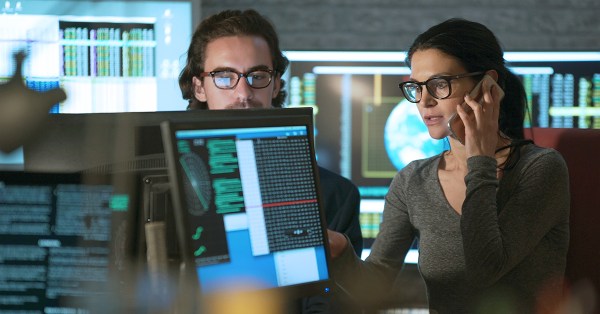Integrating DevOps practices into hybrid IT environments fosters collaboration between development and operations teams. By doing so, it can help with accelerating deployment cycles. Here is a quick guide to what you need to know.
Understanding DevOps
DevOps is an approach to software development that focuses on speed, efficiency, and reliability. The main pillar of the DevOps approach is collaboration between the software development (Dev) and IT operations (Ops) teams. DevOps also emphasizes the importance of astutely leveraging automation whenever possible.
Implementing a DevOps approach often enables businesses to streamline the entire software delivery process, from code development to deployment and maintenance. This in turn enables them to respond quickly to market demands, deliver higher-quality software, and improve overall customer satisfaction.
Understanding hybrid IT
Hybrid IT is a form of IT architecture that combines real-world and virtual infrastructure. It is typically implemented by businesses that need the very highest levels of performance. Hybrid IT infrastructure is highly flexible, in particular, it is highly scalable. It is therefore ideally suited to the fast-paced dynamic environments typically found in modern, agile businesses.
The synergy of DevOps and hybrid IT
At their core, both DevOps and hybrid IT aim to deliver maximum results from minimal resources. DevOps achieves this by encouraging human staff to work collaboratively on tasks where they add real value and by automating as many routine tasks as possible.
Hybrid IT environments provide the ideal environments for this approach as they are both highly scalable and highly customizable. This means that they can deliver whatever resources DevOps require both quickly and cost-effectively.
How collaboration between dev and ops helps with accelerating deployment cycles
Collaboration between development (Dev) and operations (Ops) teams helps with accelerating deployment cycles by fostering communication, alignment of goals, and shared responsibility throughout the software development lifecycle.
Communication: Collaborative practices enable Dev and Ops teams to share insights, requirements, and feedback more effectively, reducing misunderstandings and streamlining decision-making processes.
Alignment of goals: By working together, Dev and Ops teams align their objectives towards the common goal of delivering high-quality software efficiently. This alignment minimizes conflicts and ensures that both teams are focused on accelerating deployment cycles.
Shared responsibility: DevOps encourages a culture of shared responsibility, where both Dev and Ops teams are accountable for the success of deployment processes. This shared ownership promotes proactive problem-solving and collaboration, leading to faster resolution of issues that may arise during deployments.
Challenges of integrating hybrid IT and DevOps
While integrating hybrid IT and DevOps brings many benefits (in addition to accelerating deployment cycles) it also brings some challenges. Here are the five main ones with an explanation of how they can be resolved.
Complexity of hybrid environments: Utilize infrastructure-as-code (IaC) tools such as Terraform or AWS CloudFormation to automate provisioning and configuration management across hybrid environments. Standardize deployment pipelines to ensure consistency and minimize complexity.
Security and compliance concerns: Implement comprehensive security measures, including encryption, identity and access management (IAM), and continuous monitoring, to ensure data protection and compliance adherence across hybrid environments. Utilize security automation tools to enforce policies and detect vulnerabilities proactively.
Toolchain integration: Adopt unified DevOps toolchains that support integration with both real-world and cloud-based tools. Utilize APIs and plugins to connect disparate tools and automate workflows seamlessly across hybrid environments.
Training gaps: Provide comprehensive training and upskilling programs to equip DevOps teams with the necessary skills for managing hybrid infrastructures effectively. Encourage cross-functional collaboration and knowledge sharing to bridge skillset gaps and foster a culture of continuous learning.
Performance optimization: Implement performance monitoring and optimization strategies to identify bottlenecks and optimize resource utilization across hybrid environments. Utilize load balancing, auto-scaling, and caching mechanisms to improve application performance and ensure scalability across diverse infrastructure platforms.
Best practices when integrating hybrid IT and DevOps
Successfully integrating hybrid IT and DevOps can be made much easier by following these three key best practices.
Establish clear governance policies
This includes establishing guidelines for resource allocation, access control, data protection, and compliance monitoring. Clear governance policies ensure consistency, security, and compliance adherence across diverse infrastructure platforms and environments, facilitating smoother integration of DevOps practices.
Embrace infrastructure as code (IaC)
By defining infrastructure configurations in code, teams can standardize deployment processes, ensure consistency, and enable version control. IaC tools such as Terraform, AWS CloudFormation, or Azure Resource Manager simplify infrastructure management and facilitate seamless integration with DevOps pipelines.
Implement continuous security practices
Implement continuous security testing, vulnerability scanning, and compliance checks within CI/CD pipelines to identify and address security issues early in the development cycle. Automate security controls, such as encryption, access management, and threat detection, to ensure consistent protection across hybrid IT environments without impeding deployment velocity.





